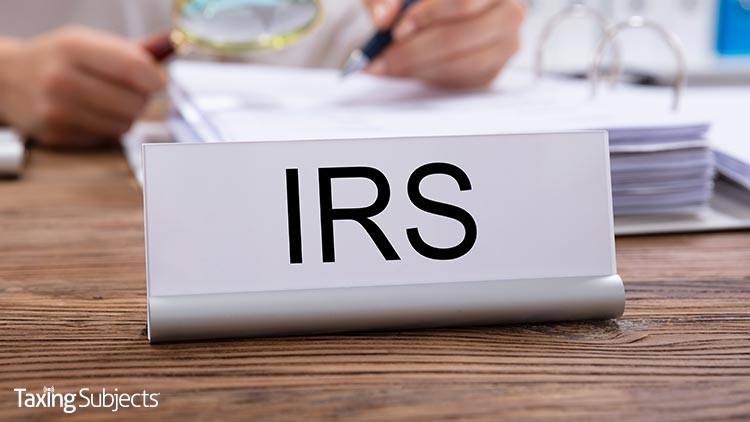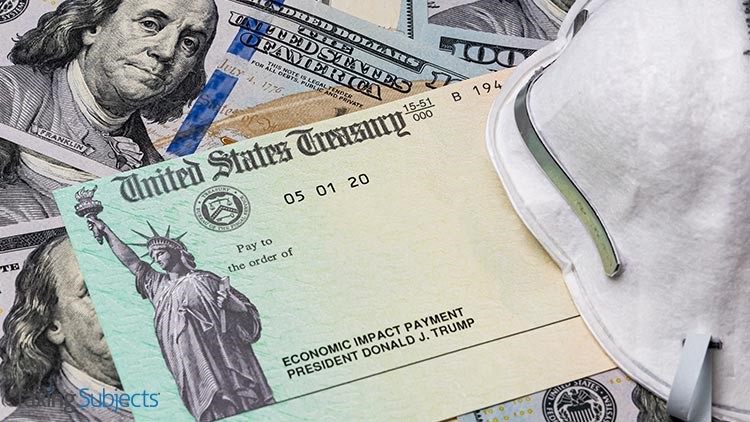by Socheata Ten EA, LLC | Oct 15, 2020 | Tax Tips and News
The Internal Revenue Service has made some 18 new seminars available that were originally recorded during the 2020 Nationwide Tax Forums.
The seminars, available on IRS Nationwide Tax Forums Online, cost $29 per seminar.
The self-study seminars provide vital information by way of interactive videos, PowerPoint slides, and audio transcripts.
The list of new 2020 seminars include:
- Advocating for Immigrant Taxpayers
- Advocating for Taxpayers with Collection Information Statements
- Be Tax Ready – Understanding Eligibility Rules for EITC, AOTC, CTC and Head of Household Filing Status
- Bipartisan Budget Act of 2015’s Centralized Partnership Audit Regime (The)
- Charities & Tax-Exempt Organizations Update
- Créditos Reembolsables (In Spanish)
- Diligence in Practice before the IRS: Record-Keeping Federal Ethics for the Tax Professionals: Office of Professional Responsibility (OPR) and Circular 230
- Impact of Non-filing and Non-payment
- IRS Key Enforcement Issues
- Keys to Mastering Due Diligence Requirements and Audits
- Keynote Address
- Preparation of Form 1040-NR, U.S. Nonresident Alien Income Tax Return
- Retirement Plan Distributions, Loans and More
- Tax Changes from a Forms Perspective
- Tax Cuts and Jobs Act (TCJA) Update: Opportunity Zones
- Tax Cuts and Jobs Act (TCJA) Update: Qualified Business Income Deduction
- Update from the IRS Independent Office of Appeals
These 18 courses are available in addition to more than 60 previously recorded sessions from prior years that are also available for credit or to audit. All are available for the same $29 price.
The IRS Nationwide Tax Forums Online is registered with the IRS Return Preparer Office and the National Association of State Boards of Accountancy as a qualified sponsor of continuing education. For a fee, CPAs, Enrolled Agents and Annual Filing Season Program participants taking NTFO seminars can earn continuing education credits.
To earn credit, users need to create an account, answer review questions throughout the class and pass short tests at the end of the seminars.
NTFO seminars can also be audited for free. Tax pros who choose to audit seminars will not have access to the review questions or the final examination. They will not receive credit for the seminars.
For more information please visit IRSTaxForumsOnline.com. Please note that this link leads to an external website.
– Story provided by TaxingSubjects.com
by Socheata Ten EA, LLC | Oct 13, 2020 | Tax Tips and News
It’s a first for the Internal Revenue Service. The agency is adding barcode technology to the printed notices that are sent to millions of taxpayers that let them know they owe Uncle Sam money.
The notices—known as CP14 and CP14 IA notices—inform taxpayers they owe money on unpaid taxes and what their payment options are. These letters now include QR barcodes to help taxpayers to go directly to IRS.gov and securely access their account, set up a payment plan or contact the Taxpayer Advocate Service.
The QR codes will start appearing on the notices this month.
Taxpayers need only to scan the QR code on the notice to give them the direct access to information needed to resolve their account balance online—without the need to directly contact the IRS.
“These codes will give taxpayers immediate access to the most important information for them to pay their balances, set up payment agreements or reach out for help,” said Darren Guillot, the IRS Small Business/Self-Employed Deputy Commissioner for Collection and Operations Support. “We understand there’s a lot of information on the web, and we want to give taxpayers more secure tools that can more easily help them resolve their tax situations.”
In most years, the IRS sends some 8 million CP14 notices to taxpayers. They are the first legal notice taxpayers get alerting them there’s a balance due. Adding a QR code to the notice gives taxpayers an up-front option for resolution.
“This will help make the entire process easier for taxpayers,” Guillot said.
If this effort proves successful, the IRS says it will consider adding QR codes to other balance-due notices in the future.
Source: IR-2020-233
– Story provided by TaxingSubjects.com
by Socheata Ten EA, LLC | Oct 11, 2020 | Tax Tips and News
Taxpayers who filed an extension are reminded that the deadline to file their 2019 taxes is looming. Oct. 15 is the deadline to file those tax returns.
Those who still owe tax due are urged to pay as soon as possible to reduce any penalties and interest.
The Internal Revenue Service says taxpayers and tax pros alike should continue to use electronic options to support social distancing and speed processing of tax returns, refunds and tax payments.
Some taxpayers have more time.
While Oct. 15 is the deadline to file, some taxpayers actually have still more time to file, including:
- Members of the military and others serving in a combat zone. They typically have 180 days after they leave the combat zone to file returns and pay any taxes due.
- Taxpayers in federally declared disaster areas who already had valid extensions. For details, see the disaster relief page on IRS.gov.
Choose the direct route for refunds.
The quickest and safest way for taxpayers to get their refunds is to have them deposited electronically into their banks or other financial accounts. Taxpayers can use direct deposit to deposit their refund into one, two or even three accounts. Direct deposit is much faster than waiting for a paper check to arrive in the mail.
Once they’ve filed, taxpayers should use the Where’s My Refund? tool on IRS.gov or download the IRS2Go mobile app to track the status of a refund.
Owe federal taxes? Pay electronically.
Taxpayers can make federal tax payments online, by phone or with their mobile device and the IRS2Go app. When paying federal taxes electronically, taxpayers should remember:
- Electronic payment options are the optimal way to make a tax payment.
- They can pay when they file electronically using tax software online. If using a tax preparer, taxpayers should ask the preparer to make the tax payment through an electronic funds withdrawal from a bank account.
- IRS Direct Pay allows taxpayers to pay online directly from a checking or savings account for free, and to schedule payments up to 365 days in advance.
- Taxpayers can choose to pay with a credit card, debit card or digital wallet option through a payment processor. No fees go to the IRS.
- The IRS2Go app provides the mobile-friendly payment options, including Direct Pay and Card Payment Providers on mobile devices.
- Taxpayers may also enroll in the Electronic Federal Tax Payment System and have a choice of paying online or by phone by using the EFTPS Voice Response System.
- Taxpayers can go to gov/account to securely access information about their federal tax account. They can view the amount they owe, access their tax records online, review their payment history and view key tax return information for the most recent tax return as originally filed.
Several payment options are available on IRS.gov/payments to help taxpayers who can’t pay their tax bill in full. Some of those options can offer smaller penalties.
Taxpayers should know:
- Though interest and late-payment penalties continue to accrue on any unpaid taxes after the original July 15 due date, the failure to pay tax penalty rate is cut in half while an installment agreement is in effect.
- The usual penalty rate of 0.5% per month is reduced to 0.25% per month. For the calendar quarter beginning Oct. 1, 2020, the interest rate for underpayment is 3%.
Got questions? Answers to many taxpayer questions can be found using the Interactive Tax Assistant (ITA), a tax law resource that uses a series of questions and responses. More answers can be found in the Frequently Asked Questions on IRS.gov.
– Story provided by TaxingSubjects.com
by Socheata Ten EA, LLC | Oct 10, 2020 | Tax Tips and News
Americans who don’t normally file a tax return now have more time to apply for an Economic Impact Payment (EIP). The Internal Revenue Service this week announced that the deadline for non-filers to send EIP-qualifying information has been extended to November 21, 2020.
Congress passed the CARES Act early in the pandemic, which provides a one-time payment of up to $1,200 for qualifying filers—even those who don’t normally file a tax return. In an effort to make it easier for non-filers to timely send their information to the IRS, the agency created the Non-Filers: Enter Info Here tool.
While the window is closing to apply for an EIP and use the tool, the IRS has given non-filers another month to register.
Who can use the Non-Filers: Enter Info Here tool?
“The Non-Filers tool is designed for people with incomes typically below $24,400 for married couples, and $12,200 for singles who could not be claimed as a dependent by someone else,” the IRS explains. “This includes couples and individuals who are experiencing homelessness.”
Those who want to get their EIP as fast as possible will need to select direct deposit. Otherwise, the IRS says filers will need to wait for a check to arrive in the mail. Regardless of how an EIP is issued, payment status can be tracked with Get My Payment two weeks after applying.
What is the EIP-application deadline for those who normally file a return?
According to the IRS, “[the November 21, 2020 deadline] is solely for those who have not received their EIP and don’t normally file a tax return. For taxpayers who requested an extension of time to file their 2019 tax return, that deadline date remains October 15.”
Don’t expect for this new deadline to get pushed back further. IRS Commissioner Chuck Rettig says “any further extension beyond November would adversely impact our work on the 2020 and 2021 filing seasons.”
Source: IR-2020-229
– Story provided by TaxingSubjects.com
by Socheata Ten EA, LLC | Oct 9, 2020 | Tax Tips and News
Cybersecurity pioneer and crypto promoter John McAfee can now add another title to his job description: defendant.
McAfee is well-known in tech circles, first for starting the anti-virus company that bears his name, and later for promoting two particular flavors of cryptocurrency. The Internal Revenue Service says McAfee showed up on their radar screens for tax evasion and willful failure to file tax returns.
The federal indictment was actually handed down in June, but was sealed until the tech millionaire was arrested recently in Spain, where he now awaits extradition to the U.S.
The U.S. Justice Department describes its case this way in a news release: “John McAfee earned millions in income from promoting cryptocurrencies, consulting work, speaking engagements, and selling the rights to his life story for a documentary. From 2014 to 2018, McAfee allegedly failed to file tax returns, despite receiving considerable income from these sources. The indictment does not allege that during these years McAfee received any income or had any connection with the anti-virus company bearing his name.”
McAfee reportedly separated his fortunes from those of the anti-virus company some time ago.
According to the indictment, McAfee allegedly evaded tax liability by directing his income to be paid into bank accounts and crypto exchange accounts in the names of various nominees. The prosecution also alleges McAfee attempted to evade the IRS by concealing real property, a vehicle and a yacht in the names of others.
There were cryptocurrency irregularities.
McAfee also finds himself on the hot seat of the Securities and Exchange Commission (SEC), which accuses him of promoting certain crypto ICOs without disclosing the fact he was paid to do so by the ICO organizers.
The SEC claims McAfee was paid more than $23 million dollars for his efforts, which are alleged to have taken place between 2017 and 2018. The ICOs in question raised more than $41 million for the organizers.
The 55-page SEC filing also includes three other important accusations against McAfee:
- McAfee falsely claimed to be an investor and/or a technical advisor when he recommended several ICOs, creating the impression that he had vetted these companies, that they were benefitting from his technical expertise, and that he was willing to invest his own money in the ventures. In reality, McAfee’s tweets were paid promotions disguised as impartial investment advice.
- After a blogger exposed McAfee’s paid promotions and he could no longer generate interest in ICOs with tweets, McAfee was still holding a large number of virtually worthless securities from the ICOs he had previously touted. To cash out, McAfee encouraged investors to purchase the securities sold in certain of the ICOs without disclosing that he was simultaneously trying to sell his own holdings and had paid another third-party promoter to tout the securities.
- Finally, McAfee engaged in a practice known as “scalping” as to at least one digital asset security, by accumulating large amounts of the digital asset security and touting it on Twitter without disclosing his intent to sell it. Scalping generally allows promoters to sell their securities holdings quickly and profitably through market interest that they deceptively generate, and violates the federal securities laws.
If convicted on the tax evasion charges, McAfee faces a maximum sentence of five years in prison on each count of tax evasion and another maximum sentence of one year behind bars for each count of willful failure to file. If convicted, he also faces supervised release, restitution, and monetary penalties.
McAfee’s indictment was handed down in the Western District of Tennessee, under the watchful eyes of Principal Deputy Assistant Attorney General Richard E. Zuckerman of the Justice Department’s Tax Division and U.S, Attorney D. Michael Dunavant of the district. Zuckerman and Dunavant both credited the special agents of the IRS Criminal Investigation division for their hard work in the case.
Note: An indictment merely alleges that crimes have been committed. The defendant is presumed innocent until proven guilty beyond a reasonable doubt.
– Story provided by TaxingSubjects.com






 Socheata Ten EA, LLC
Socheata Ten EA, LLC